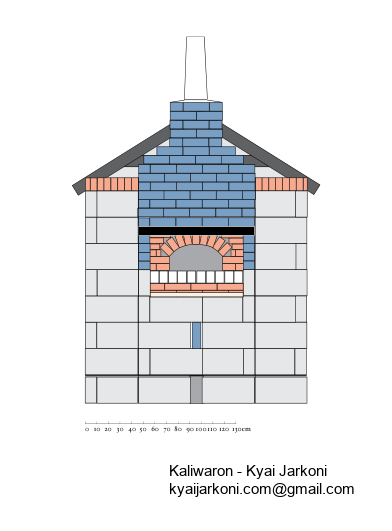Figure 1: a beehive oven, here dep icted on a wooden stand, housed in a barnlike structure to give shelter. In the foreground, a trough where the dough is
39 pages
19 KB – 39 Pages
PAGE – 4 ============
This edition published in 2011 by Prospect Books at Allaleigh House, Blackawton, Totnes, Devon TQ9 7DL. First published by Prospect Books in 1996. ©1996, 2011, Tom Jaine Typography, design and technical drawings by Tom Jaine. Cover illustration © 1996, Janet Mills Illustrations numbered 2,4,5,6,7,9,13,16,17,18,43,48,56,61,62,64, 65,67 ©1996, Mark Berryman Illustration of Skipton Castle on page 102, © Peter C.D. BrearsIllustration of Bulgarian oven on page 11, © Maria Kaneva Johnson A CIP record for this book is available from the British Library. ISBN 9781903018804Printed by Gutenberg Press Ltd., Malta.
PAGE – 9 ============
13INTRODU CTORY COOKING be cooked: roasted, grilled, boiled, fried, baked, and É. They all, for that is cooking, require the introduction of heat. And they might, with the addition of smoking an attenuated form of roasting heated in order to cook the food in the residual heat stored in Cooking techniques may be viewed as successive steps away the construction of pots to enable heat transference; then the development, over millenniums, of structures to retain heat and return it in measured and useful fashion. or the interposition of a medium, is most apposite for vegetables or fruit, if they are not eaten raw; and baking, on a bakestone or in an oven, is the preferred way of coping with grains. Cereals and the settled agriculture they just like ovens. While a close link between methods of cooking and basic boiling could be applied as well to meat as to vegetables, gruels or fruit it does become relevant in thinking about wood
PAGE – 10 ============
14ovens. We usually refer to them, and they invariably seem to have a primary use, as bread ovens. What was there about bread, therefore, that urged mankind towards ovens? Bread, and ovens, are essentials of a Mediterranean, neareastern, and southern European culture. The two are indissoluble, and have colonized the world as supercargoes on the packet boat of European migration. Where a technique of form of a pit of heated stones, such as the North American clambake, or the Polynesian paupau: nothing to do with bread, but cooking out of the circulating air, by means of borrowed, indirect, or residual heat.BAKESTONES AND POT OVEN SThere are many strategies available for dealing with grain. can be made into a paste and boiled, as with central Asian pasta, or dumplings. Or the paste can be wrapped round sticks and roasted for the Boy Scout favourite, twist. The use of controlled surface of the hearthstone itself, once swept of ash and embers, was a further primitive method that appealed to cultures across the world whether in Ethiopia, Pakistan, the Middle East, Latin America, or Brittany and other Celtic upland zones of northern Europe. The two essential techniques, bakestone and ashes of the hearth, might co exist. When two Anglo Saxon historians Flatbreads, like pancakes, have little or no leavening. They are satisfactorily cooked on a griddle, not requiring the all round heat of the oven. Griddle baking is not wholly restricted
PAGE – 11 ============
15 Ethiopian injera , made from the indigenous grass seed tef, was much lighter, softer and more spongy than it would otherwise have been. The yeast raised crumpet or pikelet is also full of holes and spongy in texture. But cooking these on a griddle has inevitable consequences on their form. If a dough is leavened and worked into a shape that requires more complex and gradual application of heat than a griddle can supply, then practical A bakestone is not the most adaptable of instruments. Its heat is delivered from one side only; whatever is cooked on it will usually have to be turned. But a stone with a cover was a radical improvement, for embers heaped around the lid could provide top heat. In short, an oven, albeit with inadequate Ireland, barley bread in Cornwall, or spelt and wheaten breads in southeastern Europe and the Mediterranean. These pot ovens have a long recorded history, in classical cultures as well as the barbarian fringes. There were two terms in Latin: testum and clibanus klibanos and ultimately perhaps from the Indo European root *kleibh which testo, tegamo , tiella and tian in various Mediterranean languages, references like the instruction by Cato to knead, mould and bake your bread under the testu, or pseudo in Moretum of cleaning the hearthstone for the bread, then account of the development of ovens subsequent to the more the linguistic and archaeological evidence. In the Middle Ages,
19 KB – 39 Pages
